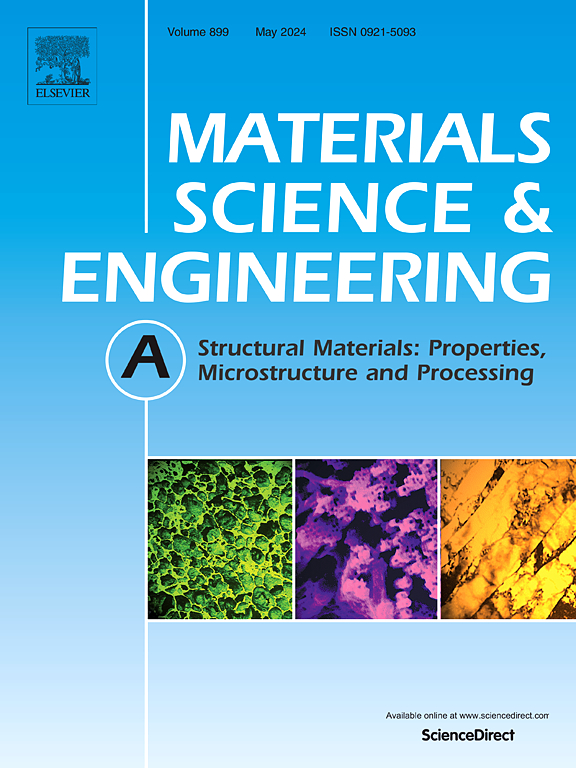揭示残余奥氏体稳定性对trip辅助钢动态力学性能的影响
IF 7
2区 材料科学
Q1 MATERIALS SCIENCE, MULTIDISCIPLINARY
引用次数: 0
摘要
TRIP辅助钢因其利用残余奥氏体(RA)的相变诱导塑性(TRIP)效应显著提高延展性和韧性的能力而受到广泛关注。然而,与RA稳定性相关的与碰撞情况类似的动态力学性能却被忽视了。在本研究中,通过控制等温回火时间,在保持基体一致的情况下,制备了三种具有不同RA稳定性的trip辅助钢。在不同应变速率下进行了动态压缩,以阐明RA稳定性对动态力学性能的影响。结果表明,在高应变速率下,绝热升温增强了奥氏体的稳定性。在不同应变速率下,绝热升温对不同稳定性RA的影响是一致的,RA的初始稳定性决定了其动态力学性能。与初始稳定RA高的钢相比,具有不稳定RA的钢可以通过更活跃的TRIP效应吸收更多的塑性功/变形能,阻碍绝热剪切带(ASB)的形成,显著提高动态力学性能。应变速率越高,不稳定RA带来的动态力学性能改善越显著。这为trip辅助钢的微观结构设计提供了一个新的视角,该设计需要考虑高应变率下的变形行为,例如高速冲击。本文章由计算机程序翻译,如有差异,请以英文原文为准。
Uncovering the effect of retained austenite stability on the dynamic mechanical properties of TRIP-aided steel
TRIP-aided steel has received significant attention because of its ability to appreciably enhance the ductility and toughness by utilizing the transformation-induced plasticity (TRIP) effect of retained austenite (RA). However, the dynamic mechanical properties, similar to the condition of crash situation, which is related to RA stability, are overlooked. In this study, three types of TRIP-aided steels with different RA stability were prepared by controlling the isothermal tempering time while maintaining a consistent matrix. Dynamic compression was conducted at different strain rates to elucidate the influence of RA stability on the dynamic mechanical properties. The results indicate that at high strain rates, adiabatic temperature increase enhances the stability of austenite. The effect of adiabatic temperature increase on RA with different stability is consistent at different strain rates, and the initial stability of RA determines the dynamic mechanical properties. Compared with the steel with initially high stable RA, the steel with unstable RA can absorb more plastic work/deformation energy through more active TRIP effect, hinders the formation of adiabatic shear bands (ASB), and significantly improves the dynamic mechanical properties. The higher strain rate induces a more significant improvement in dynamic mechanical performance brought by unstable RA. This provides a new perspective on the microstructure design of TRIP-aided steel that needs to consider deformation behavior under high strain rates, such as high velocity impact.
求助全文
通过发布文献求助,成功后即可免费获取论文全文。
去求助
来源期刊

Materials Science and Engineering: A
工程技术-材料科学:综合
CiteScore
11.50
自引率
15.60%
发文量
1811
审稿时长
31 days
期刊介绍:
Materials Science and Engineering A provides an international medium for the publication of theoretical and experimental studies related to the load-bearing capacity of materials as influenced by their basic properties, processing history, microstructure and operating environment. Appropriate submissions to Materials Science and Engineering A should include scientific and/or engineering factors which affect the microstructure - strength relationships of materials and report the changes to mechanical behavior.
 求助内容:
求助内容: 应助结果提醒方式:
应助结果提醒方式:


